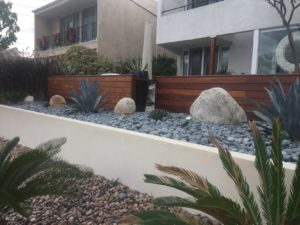Gravel is a versatile and cost-effective landscaping material that can transform your outdoor space into a stunning and functional environment. Whether you’re designing a serene garden path, creating a durable driveway, or crafting an eye-catching focal point, the various types of gravel available offer endless possibilities.
In this comprehensive guide, we will explore the different types of gravel and provide insights on how to use them effectively in your landscape design.
Types of Gravel
1. Pea Gravel
Pea gravel is a smooth, round-edged gravel that ranges in size from about 1/8 to 3/8 inch. In line with this, its small size and soft appearance make it perfect for pathways, patios, and as a ground cover in garden beds. To add, its gentle texture creates a comfortable surface for walking and sitting.
2. Crushed Stone
Crushed stone is a widely used material with various sizes available. Also, it includes angular pieces of rock that can range from 3/8 inch to several inches in diameter. As well, crushed stone is ideal for driveways, walkways, and as a base for other landscaping features. Further, it provides excellent drainage and compacts well for stability.
3. River Rock
River rock is characterized by its smooth, rounded edges and a variety of sizes and colors. It’s often used in water features, such as ponds and dry riverbeds, but can also be employed for edging, mulch, or as a decorative ground cover. What’s more, the soothing, natural appearance of river rock adds a tranquil element to any landscape.
4. Decomposed Granite
Decomposed granite is a finely crushed gravel that ranges in size from granules to 1/4 inch. It’s commonly used for pathways, patios, and as a top dressing for xeriscapes. Also, this material compacts tightly, making it an excellent choice for areas with foot traffic.
5. Crushed Gravel
Crushed gravel is similar to crushed stone but often contains a mix of smaller stone fragments, sand, and clay. In addition, it’s a versatile option for driveways, as it provides good traction and a rustic aesthetic.
6. Lava Rock
Lava rock is a lightweight and porous option, often used in xeriscaping and as a mulch. Besides, its unique texture and reddish-black color create a striking contrast in gardens. Additionally, lava rock also retains heat, making it suitable for areas with cool nights.
7. Marble Chips
Marble chips are a polished and elegant choice. With their pristine white color, they are often used in formal gardens, around statues, or as a decorative element in pathways.
How to Use Gravel in Your Landscape
1. Pathways and Walkways
Gravel pathways are not only functional but also visually appealing. Create meandering paths through your garden or connect different areas of your landscape with gravel walkways. Then, edge them with stone or metal borders to keep the gravel in place.
2. Driveways
Gravel driveways are a cost-effective alternative to asphalt or concrete. Choose a sturdy type like crushed stone or crushed gravel to ensure stability. Properly compact and maintain the driveway to prevent erosion and potholes.
3. Patio Base
Gravel is an excellent base material for patios. As well, it provides good drainage and stability. So, lay a weed barrier fabric underneath to prevent weed growth and ensure your patio remains attractive and easy to maintain.
4. Garden Borders
Use gravel to define garden beds and borders. This not only adds aesthetic appeal but also prevents grass and weeds from encroaching into your garden.
5. Decorative Accents
Gravel can be used decoratively in various ways. Then, consider creating patterns or designs using different types and colors of gravel. Moreover, it can also be used around fountains, statues, or as a mulch alternative.
6. Xeriscaping
In drought-prone areas, gravel is an essential component of xeriscaping. It reduces the need for irrigation and can be combined with drought-tolerant plants to create a water-efficient landscape.
7. Erosion Control
It can help prevent soil erosion on slopes or hilly areas. Also, it stabilizes the soil and prevents rainwater from washing it away.

Maintenance Tips
To keep your landscape looking its best, follow these maintenance tips:
- Regularly rake and level the pounded stones to maintain a smooth surface.
- Add fresh gravel as needed to fill in low spots and maintain the desired thickness.
- Install proper edging to contain the pounded stones and prevent it from spreading into unwanted areas.
- Use a landscape fabric underneath the pounded stones to deter weed growth.
- Periodically check for drainage issues and address them promptly to prevent puddles or erosion.
Gravel is a versatile landscaping material that can enhance the functionality and aesthetics of your outdoor space. By choosing the right type and incorporating it effectively into your landscape design, you can create a beautiful and low-maintenance environment that suits your style and needs. Whether you’re aiming for a rustic, natural look or a more formal and elegant ambiance, gravel has the flexibility to adapt to your vision and make your home’s outdoor space truly exceptional.
Explore 8 Types of Hardscaping to Transform Your Outdoor Space for more ideas.



